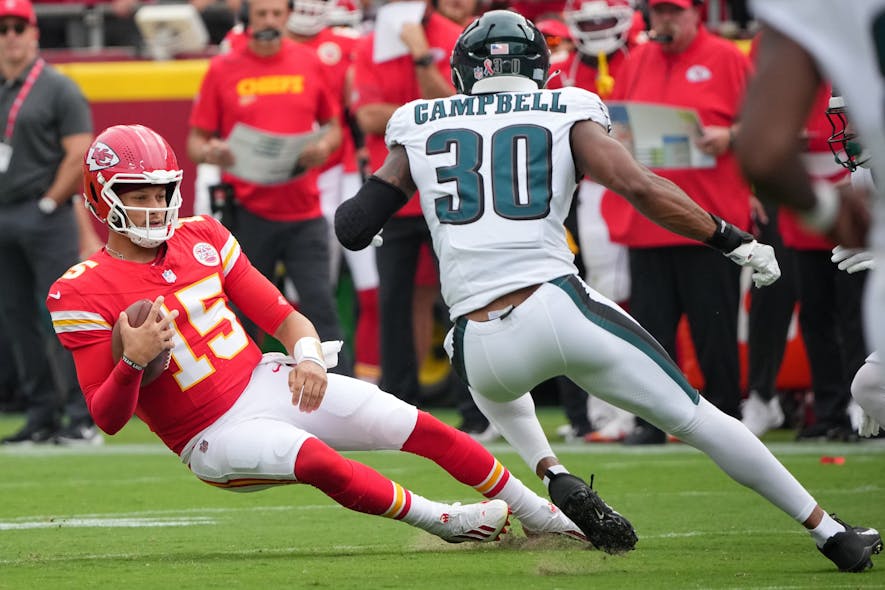Anatomy of a Comeback
Thirty-two years ago, the Buffalo Bills came back from a 32-point deficit to the Houston Oilers to advance in the playoffs. The greatest NFL playoff comeback in history is even more famous because a backup quarterback led it. Frank Reich also quarterbacked the greatest major college football comeback at the time when Maryland overcame a 31-point hole versus the Miami Hurricanes. Moreover, the Oilers had beaten the Bills 27-3 just one week earlier, in the last game of the 1992 regular season, and knocked out starting QB Jim Kelly in the process.
The defensive story is largely forgotten. The Bills had allowed 55 points in a game and a half to Houston's unusual 10-personnel, "run-and-shoot" offense. The Bills opened the playoff game in dime defense to match receivers with defensive backs. At the time, game-specific defensive game-planning was uncommon. Perhaps for that reason, it was also unsuccessful.
The Bills opened the second half in their base 3-4 defense, a move that, in the moment, looked like a white flag. The Oilers needed to run the ball to protect the large lead but could not at all from light sets. The Bills' pass defense consistently rushed four and sat back in zone coverages, tasking its linebackers and safeties with coming up to make tackles against smaller, faster receivers for short gains.
Houston quarterback Warren Moon needed to be patient to matriculate the ball down the field with short passes. Instead, Moon pressed and drove the ball downfield. Late in the third quarter, Moon threw the ball high to All-Pro safety Henry Jones playing two-deep alongside Mark Kelso. The comeback, just a "What if?" until then, became real.
Personnel Solutions
In the 1992 season, NFL teams averaged 18.7 points per game. Scoring peaked in 2020 at 24.6 points per game. By 2020, 11-personnel had become the norm, and deployment of dime subpackages hit an all-time high.
In the last five seasons, NFL defensive coordinators have made decisions similar to the 1992 Bills'. Two-high shells have become as common as man coverage and serve as a substitute for the personnel decision of replacing a linebacker with a defensive back. Defenses are building out coverages first and rushing just four.
NFL defenses commonly react and adjust to the evolution of NFL offense. In just the last couple of years, the defensive adjustment toward two-high coverages and nickel personnel has compelled offenses to adjust. Use of 11-personnel has ebbed in favor of 12-personnel, wherein a second tight end plays rather than a third wide receiver.
In 2022, no team used 12-personnel even 30 percent of the time. Through six weeks of 2025, ten teams have deployed two tight ends and two wide receivers in at least 30 percent of their plays. Three teams have used 12-personnel in more than 40 percent of snaps.
The two teams leading the league in deployment of 11-personnel are two of the NFL's worst through 6 weeks. The Titans and the Bengals lack credible running games, and each of their inexperienced quarterbacks is collapsing under the load of carrying the offense.
Personnel groupings on defense are likewise trending heavier. Nine teams are using base personnel at least 30 percent of the time this season. Four have played in base more than 40 percent of snaps, and two – Detroit and Las Vegas – have cleared 50 percent usage. Notably, Las Vegas's Jamal Adams is classified as a linebacker in this data set, and injuries have forced the Lions to lean on their three linebackers. Five of the six cornerbacks they opened the season with missed Week 5.
The 1992 Bills and their 3-4 defense had simulated pressure built in. The nose tackle didn't come off the field, and the outside linebackers alternated rushing and playing coverage on passing downs. In the 21st century, the substitution of the nose tackle by an extra defensive back lessened the need for outside linebackers to play in coverage. The substitution helped the offensive line by allowing them to identify the four pass rushers clearly.
Through the first six weeks of 2025, the average NFL team simulates pressure (8.1%) as often as it rushes six defenders (8.6%). Five or more players rush the passer in a blitz. Just four do so in a simulated pressure, just not necessarily the four along the line of scrimmage. A linebacker or defensive back rushes the passer while a defensive lineman drops into coverage.
The "Hybrid" Defender
Continue reading this content with a ELITE subscription.
An ELITE subscription is required to access content for IDP (individual defensive players) leagues. If this league is not a IDP (individual defensive players) league, you can edit your leagues here.

